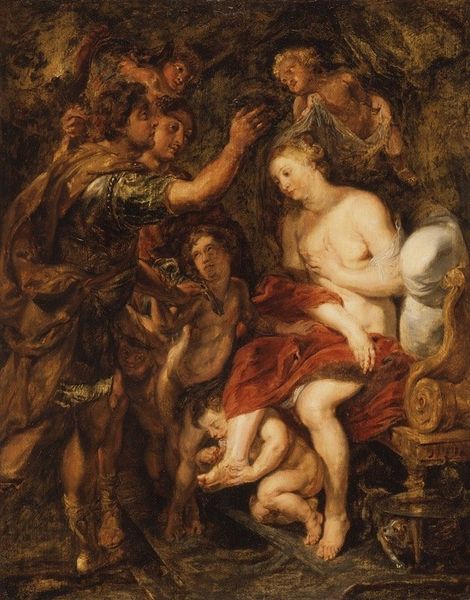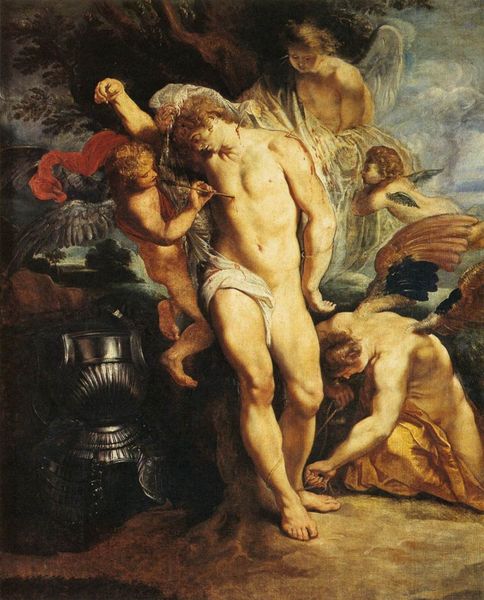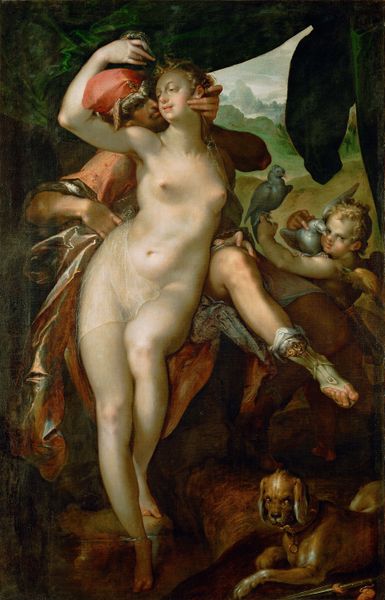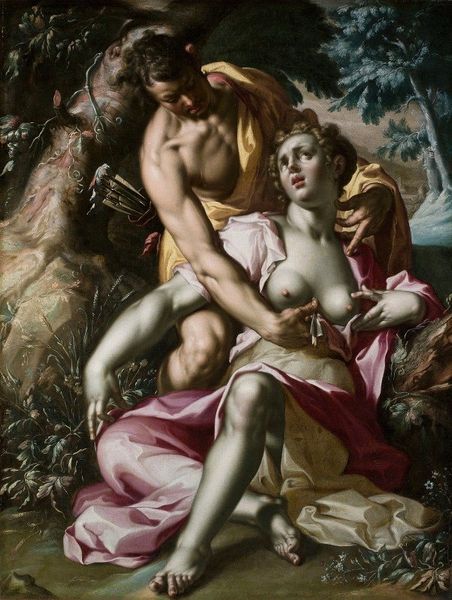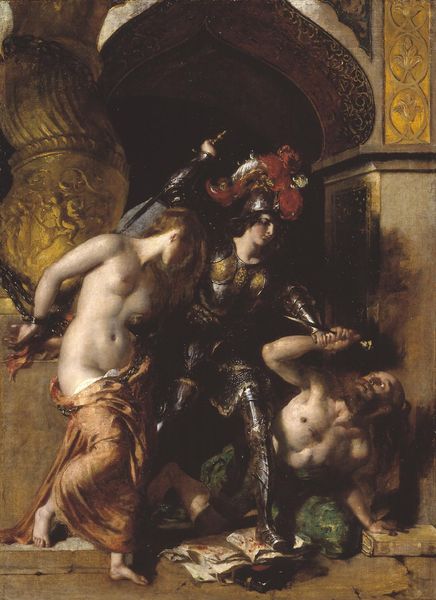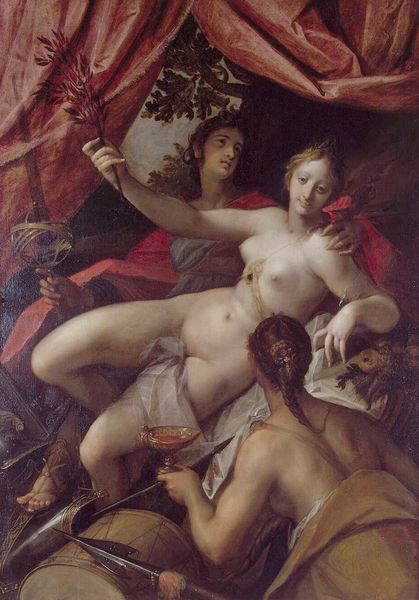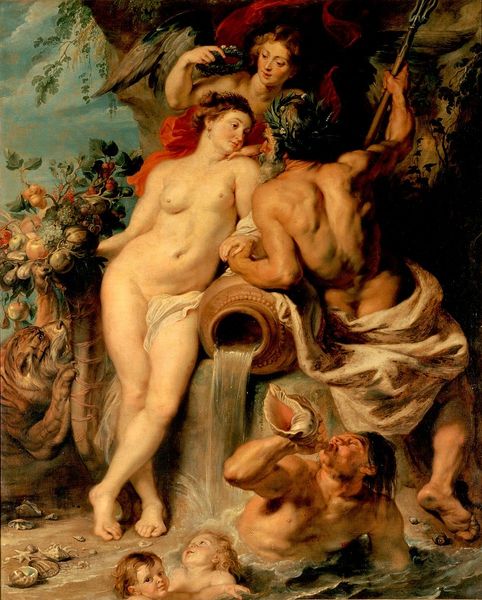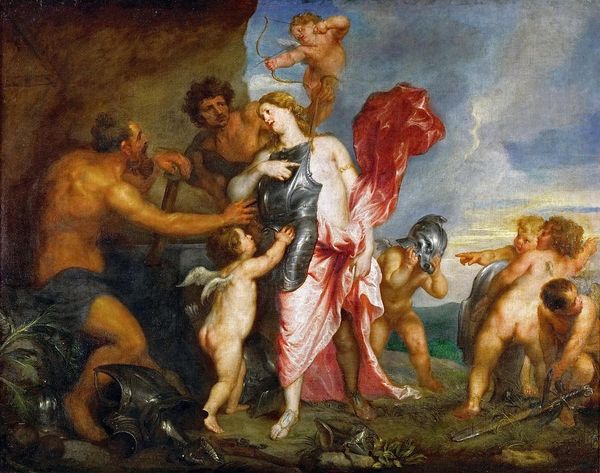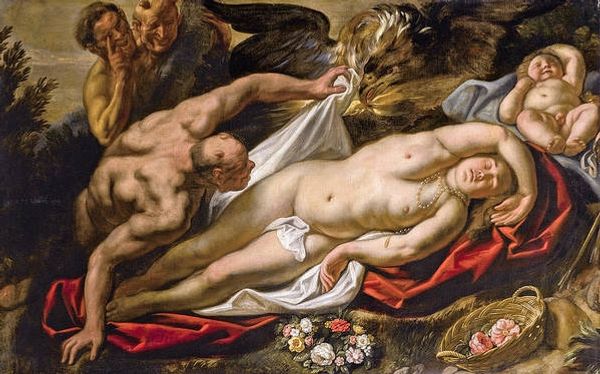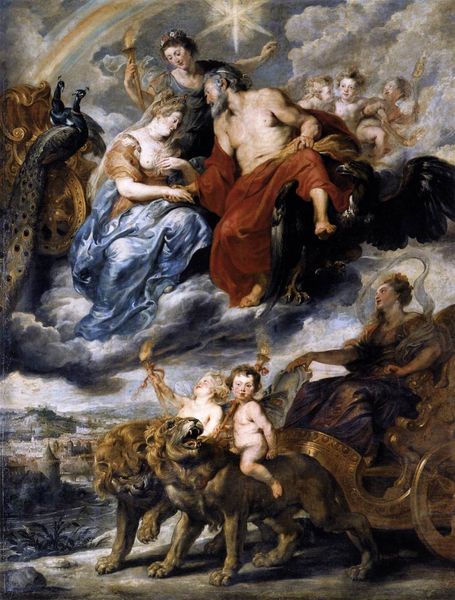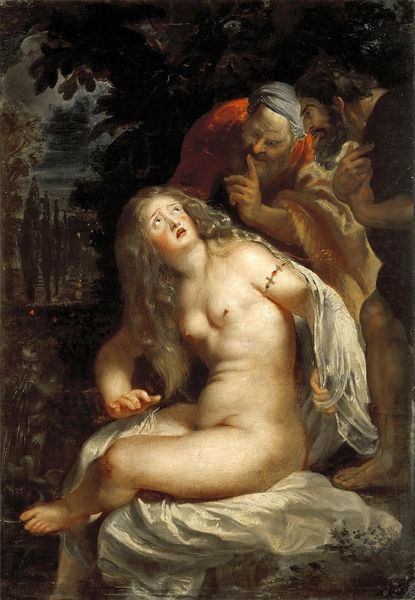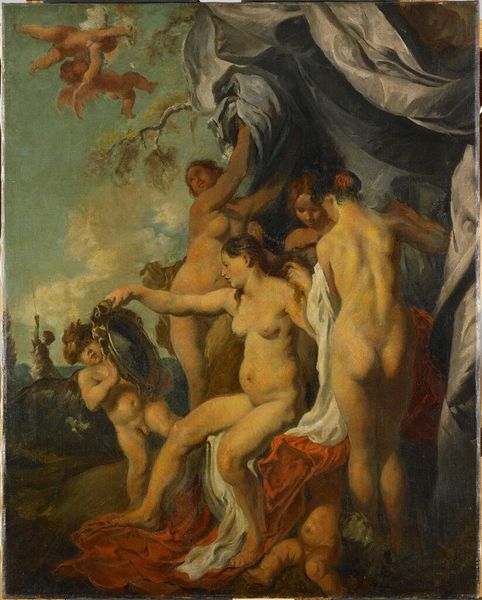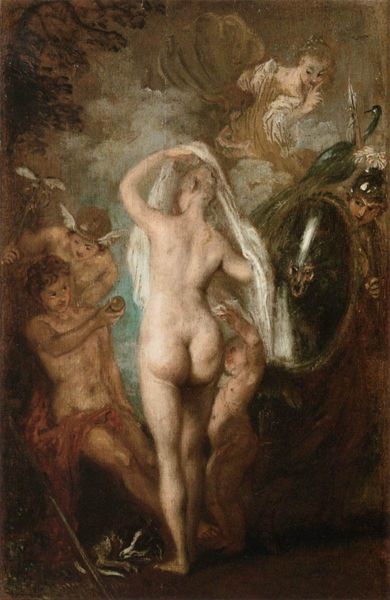
painting, oil-paint
#
venetian-painting
#
allegory
#
baroque
#
painting
#
oil-paint
#
figuration
#
oil painting
#
roman-mythology
#
mythology
#
history-painting
#
nude
Dimensions: 145 x 220 cm
Copyright: Public domain
Curator: Immediately, my eye is drawn to the visual dynamism, that swirling vortex of figures bathed in contrasting light. It’s almost theatrical. Editor: This dramatic canvas, rendered in oil paint, is Anthony van Dyck's "Venus asking Vulcan for the Armour of Aeneas," dating back to 1632. It’s currently held at the Louvre in Paris. Van Dyck, of course, worked in the Baroque style and spent considerable time in Venice, as did Peter Paul Rubens. Both painters certainly left an impact. Curator: You can feel that Venetian influence – the opulent fabrics, the rich, warm palette, and the heightened drama. Look at Venus, seemingly illuminated from within, her request an imperative gesture. Is this almost like the stage design of the Roman god’s stories as political messages? Editor: Absolutely, these mythological scenes were ripe for allegorical interpretations, reflecting on power, duty, and the role of the aristocracy. The scene depicts Venus seeking armor for her son, Aeneas, from Vulcan, the god of fire and metalworking. The armour itself could be a reference to the protection sought by rulers from their rivals. Van Dyck also uses very deliberate symbolism to tell the Roman myth through his art. Curator: Yes, notice the cherubs—one hovering above with arrows, symbolizing love's influence. The young Cupid, clutching at Venus’ leg, seems to plead with his mother. It speaks to enduring power dynamics within family structures too, maybe reflecting similar hierarchies of the aristocratic classes from that time period. I like how Cupid pulls a robe from one of the crafted arms to emphasize how urgent the situation is and remind the viewer that she isn’t only in peril, her son is as well! Editor: Indeed, and the figure of Vulcan, surrounded by his cyclopean workers, seems less a classical god and more a representation of industrious might, forged in the darkness. The scene vibrates with the promise of divine intervention into mortal affairs. Looking again, Venus' posture is familiar to those acquainted with representations of Charity; so could her journey to secure Aeneas' future serve as an iconographic warning about putting others' safety above one's own? Curator: So true! Van Dyck masterfully synthesizes the grand drama of the Baroque with nuanced symbolism to tell not just Aeneas’ story but also broader allegories. It offers multiple readings. Editor: Exactly. And the cultural memory embedded within these visual symbols gives the artwork its continued power today.
Comments
No comments
Be the first to comment and join the conversation on the ultimate creative platform.
